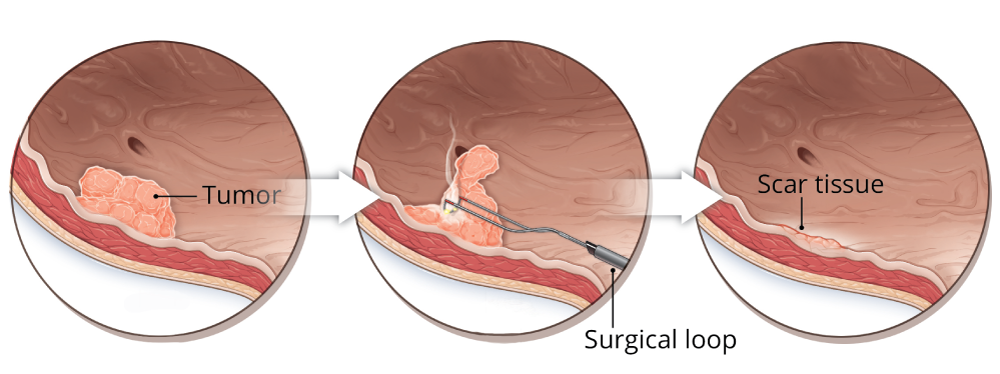You will either go home the same day or stay in the hospital overnight. You will probably wear a small drainage tube called a catheter, to help drain your urine for a few days. You may also have to urinate more often. These side effects should go away with in two weeks of the operation. Be sure to tell your physician or nurse if you have any bleeding or pain. Your provider will need to know how much bleeding you have and will be able to give you medication to relax your bladder and avoid spasms.
Some patients will have intravesical chemotherapy in which the chemotherapy drug is delivered directly into the bladder through the catheter. The chemotherapy fills the bladder and destroys any microscopic tumor cells not removed by the surgery.


